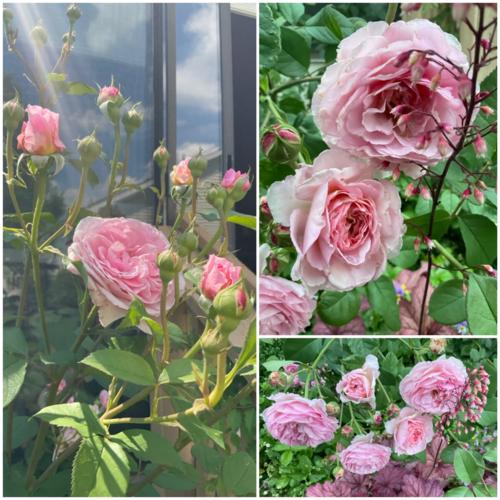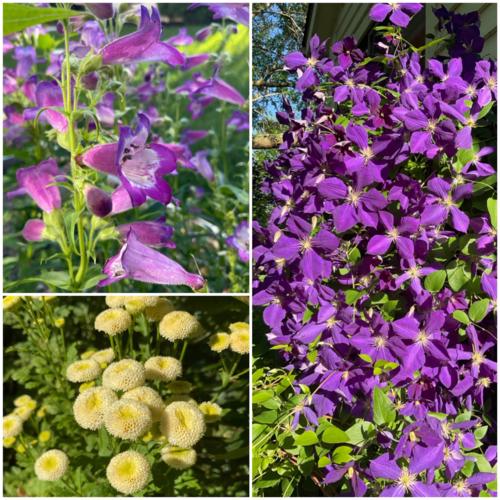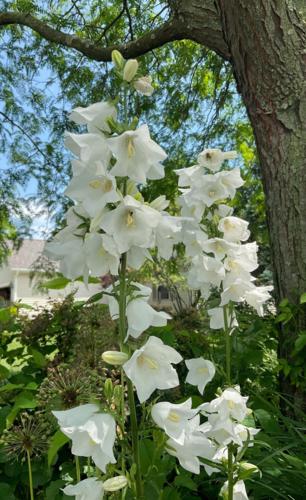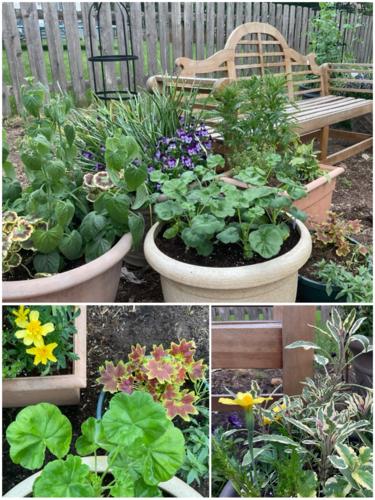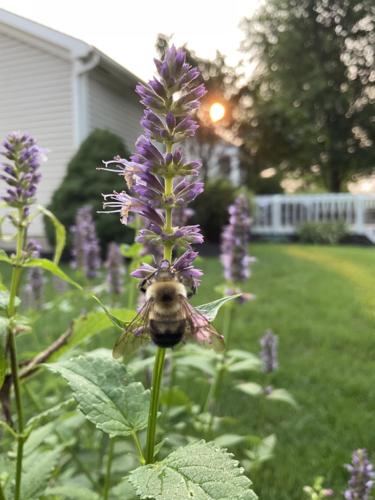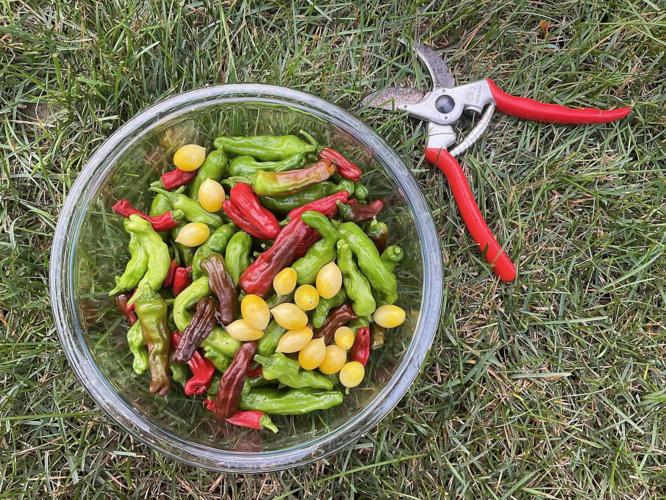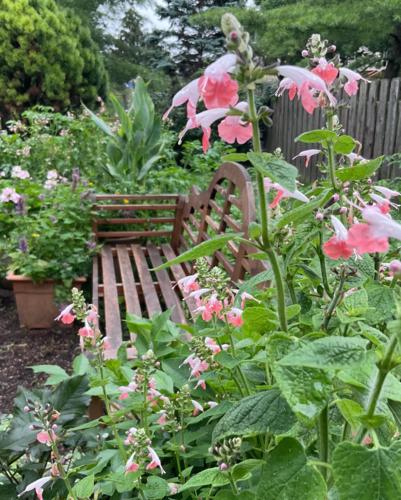September 12, 2021 by IG
June and July 2021 Garden Journal — IG
If you’ve been following this series of garden journals, you may have noticed that I didn’t post one for June. I was rather dejected by my garden that month, the boisterous show of blooms was over, as expected. The foliage wasn’t looking as fresh and showing signs of insect damage. The feverfew was having its moment, but I had missed the right time to insert supports and it was laying prostrate over other plants and the lawn path. I didn’t think that my disappointment would make for a fun read so I decided to hold off and make it part of the next post, hopefully accompanied by some more welcome July garden news to report.
June
We had a neighborhood yard sale. I put out a small hoard of leftover tomato plants and a battalion of the sedum army.
Nobody bought anything so I put up a FREE sign. Plants were immediately gone.
Baby birds in the hanging basket hatched.
Feverfew flopped.
Roses finished blooming.
Clematis, penstemon, and digitalis were looking nice for a little while. Will need to get more of those plants to fill the June garden gap. I’d also like to sow more campanulas, they seem to have a longer bloom period, but, unfortunately, aren’t as bunny-proof as the aforementioned June bloomers.
Violas still blooming, surrounding not-yet-spent daffodil foliage. Other planters are filled with pelargoniums, ornamental and edible salvias, marigolds, mint, thyme, and snapdragons.
July
June did have some pretty flowers, but they were sparse and the garden seemed tired to me. By the time July rolled around, I had gotten used to the tired look, and to be honest, almost stopped noticing the problem areas. My attention shifted to new growth. The tender salvias were growing taller and blooming. The agastaches I bought as plug size plants last year turned into robust three foot tall bee magnets. The dahlias I planted as tubers in the last days of May had put on a couple feet of growth by the end of July, and everything looked a little less empty.
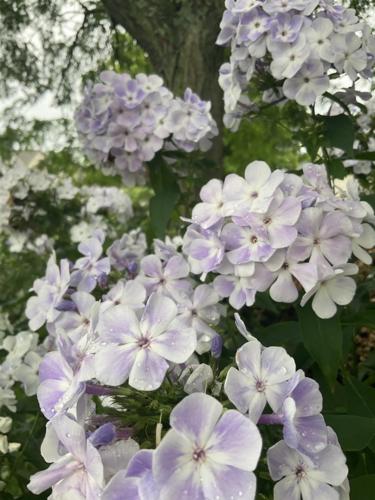
The floppy feverfew had gone to seed. (Why did I let this happen? I’m going to have a lot of seedlings to pull.) It was way past time to cut back the yellowing foliage and I finally did, in some cases leaving the stalks as short stubs in order to rejuvenate the plants. The old growth had gotten surprisingly thick, almost woody, and an hour of pruning had left me with a blister. I made sure everybody knew of it, it seemed like an accomplishment...until I went back for round two of pruning, then it really hurt. The once neat edge of the bed was completely ruined where the feverfew had flopped and in some places, the bed looked worse after the clean up. In other areas, however, removing the mess revealed lovely self-sown nicotiana. Once again, these plants were flopped over, reaching for the light. I staked them as best I could and the (dead) grass path finally revealed itself.

I hadn’t put my big new tomato cages around the grow bags holding the
tomato plants, expecting to have to move the bags to make room for the
tilling and amending we were expecting a landscaper to do. You might
have guessed where this story is going: he kept delaying the work. And
what did the tomatoes do? The same thing we do every night, Pinky
most of my plants do, they flopped. The shishito peppers were producing
well, but the alpine strawberries were taking a break.
By mid-July, the containers were finally filling in. I had placed them in groups around a bench in the empty, increasingly more weedy backyard to try to spruce it up while waiting for its overhaul. We used to have two large forsythia shrubs taking up this space, but had them removed to make room for a flower garden in the only full sun spot on our lot. Removing the forsythias had disturbed an apparently bottomless bank of weed seeds, but also a nice surprise of tomato seeds. We’re now in the second year of tomatoes coming up on their own. I don’t water them, I don’t fertilize them, I don’t stake them, and they’re generally healthy and very productive. As much as I look forward to having a flower garden in this area, I might actually miss the volunteer tomatoes.

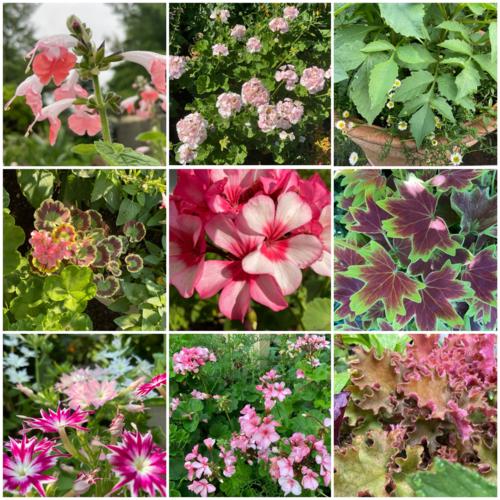
All photos except for birdies by IG.



